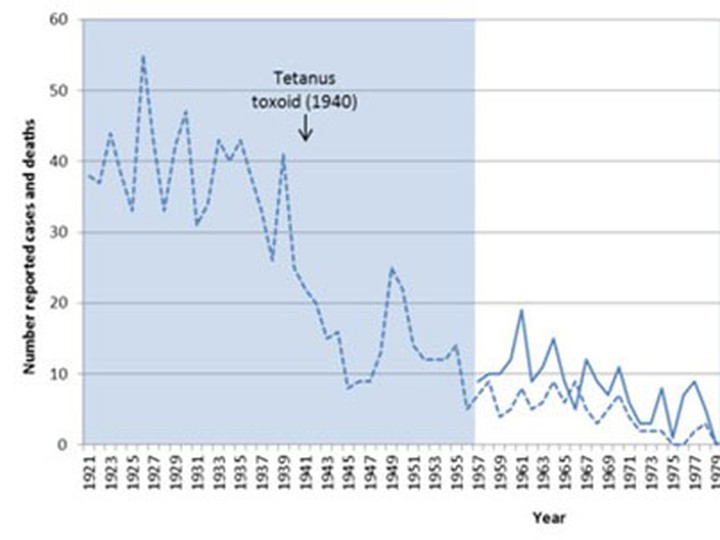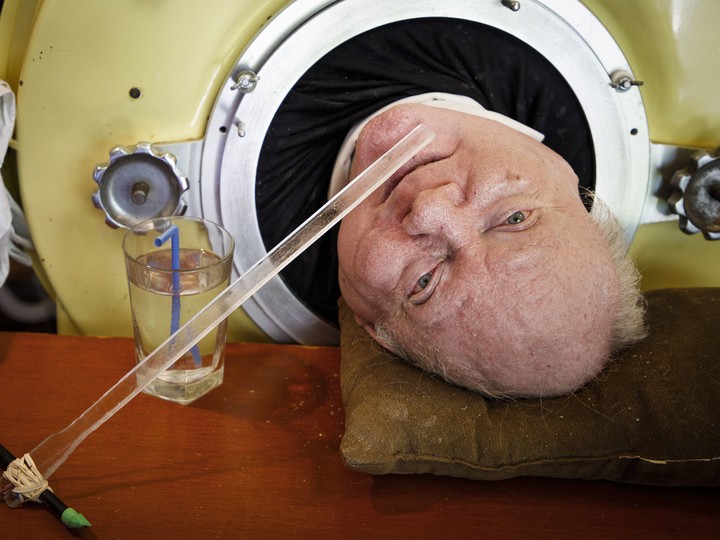what a canada without vaccines was really like
up to 750,000 young canadians now have no immunity whatsoever against diphtheria, whooping cough, tetanus and measles

an unnamed canadian boy being vaccinated in 1959. he would be among the first generation to know a canada where immunization had turned polio, diphtheria, smallpox and whooping cough into medical anomalies.
library and archives canada/national film board
canada has one of the lowest child vaccination rates in the developed world. with about one tenth of canadian children now going unvaccinated, this means that up to 750,000 young canadians have no immunity whatsoever against diphtheria, whooping cough, tetanus and measles.as outbreaks of vaccine-preventable diseases begin to re-emerge, ottawa has poured $3.4 million into a pro-vaccination ad campaign that critics have denounced as “milquetoast and flaccid.”perhaps the federal government would have been better served by reminding canadians of the alternative to vaccination: a country wracked by fear, tragedy and landscapes of dead and paralyzed children. below, a few vignettes from a pre-immunization canada.annual wintertime outbreaks used to kill hundredssay the words “walkerton, ontario” and most canadians will immediately conjure up the 2000 tragedy where a contaminated municipal water supply sickened thousands and killed six. but it wasn’t too long ago that walkerton-sized health tragedies were to be expected every time canadians started to spend more time indoors. in 1943 alone canada logged 19,000 cases of the now-vaccine-preventable whooping cough, with 416 deaths. victims were disproportionately babies, meaning that if those 1943 whooping cough fatalities had lived, they would now be roughly the age of joni mitchell or phil esposito. measles, another now-vaccine-preventable disease, killed 800 in 1926. it was still killing up to 100 children per year well into the 1960s, and leaving as many as 300 with permanent mental retardation.
advertisement

diphtheria was canada’s leading cause of childhood deathwhen six-year-old willie lessaux got home from school in october, 1927, he complained to his mother that he wasn’t feeling well. when she went to wake willie up she found he was dead from conditions consistent with diphtheria; he had quietly choked to death in the night as the infection closed his airway. willie, a student of toronto’s still-standing william burgess elementary school, had experienced the most common death to canadian children at that time. according to the museum of health care at kingston, as late as the 1920s diphtheria was killing up to 2,000 young canadians every year. even as late as 1943, vaccination apathy meant that the disease was still able to kill 200. diphtheria hasn’t killed anyone in canada since 2000, but the disease remains in check purely due to immunization. in the former soviet union, for instance, plummeting vaccination rates after the fall of communism brought about a diphtheria resurgence that killed 1,000 children.

thousands were paralyzed by polio as late as the 1950sin 1921, a 39-year-old franklin delano roosevelt visited new brunswick for a family vacation. he climbed into bed with a serious fever, and when he awoke he could not feel his legs. this nightmarish scene would play out thousands more times in canada, often to children, until the advent of the jonas salk-invented polio vaccine. “paralysis spreads throughout canada” read a globe and mail headline in september 1937 after polio fatalities and paralyses began to crop up everywhere from new brunswick to alberta. in 1953 canada recorded a peak of 481 polio deaths. even as polio immunization was in full swing by the late 1950s, the disease went out with a horrifying finale. in 1959 canada’s last major polio outbreak paralyzed 1,300 and killed 118. canadian parents of that era did not need much urging in order to get their children vaccinated. in one instance, up to 10,000 people lined up in pouring rain outside montreal city hall in order to receive the salk vaccine.

advertisement
urban toronto is littered with cholera mass gravesit’s safe to say that there are very few living native-born canadians who have ever needed to participate in the digging of a mass grave. but in 19th century toronto outbreaks of cholera repeatedly forced the city to abandon all funereal niceties and begin throwing the bodies of their loved ones into pits. the bay subway station is sunk into an area that may contain up to 1,000 bodies of disease victims. st. james park sits atop the skeletons of as many as 2,000. the deadliness of cholera would be mitigated largely through better sanitation and hygiene. nevertheless, the modern existence of oral cholera vaccines means that if an outbreak occurs (as it did earlier this year on vancouver island) it can now be stemmed long before it gets to the mass grave stage.

well into the 20th century, indigenous communities were decimated by diseases that are now vaccine-preventablewhile the medieval-era black death is often cited as the worst pandemic in history, it doesn’t come close to the devastating outbreaks of smallpox that depopulated north and south america following european contact. in 1792 when george vancouver first visited the site of a city that one would day bear his name, he encountered only abandoned villages, beaches strewn with bodies and huddled groups of badly scarred survivors. but village-destroying epidemics would continue well into the era of radio and long-range aircraft. in 1949, 54 inuit were paralyzed and 14 killed by an outbreak of polio around the hudson bay community of chesterfield inlet. the disease was entirely new to the area, and spread rapidly among semi-nomadic family groups who spent nights gathered tightly in igloos. “residual paralysis for the head of an eskimo family means starvation for all,” read one press account from the time. most tragic of all, the carnage was traced to a single man who had picked up the disease in churchill, manitoba before spreading it on a journey north.tuberculosis was once canada’s leading cause of deathas fireworks exploded over celebrating citizens in 1867 canada, it’s almost a guarantee that many of them would soon be dead of tuberculosis.according to the canadian public health association, the disease was then the leading cause of death in the new country. the canadian lung association has estimated that the tuberculosis death rate at the time was likely 200 per 100,000 — the equivalent of 7,000 total fatalities every year. but even when tuberculosis wasn’t killing canadians it would imprison them. well into the 20th century, the only treatment for the disease was bed rest and fresh air in a quarantined facility known as a sanatorium. there were 19,000 beds in these sanatoriums by 1953 and any canadian showing symptoms of the disease would be forced into them for years on end. rates of active tuberculosis in canada are now among the lowest in the world. however, routine tuberculosis vaccines continue to be administered in communities at high risk for the disease, particularly among first nations in the prairies and territories.communicable disease killed half of northern labrador in 1919in the spring of 1919, canada began to receive chilling telegrams from what was then the separate country in newfoundland. over that winter disease had killed half of everyone living in what is now northern labrador. a settlement of 200 named okak was entirely dead. the same was true of a settlement called nain, where roughly 80 inuit and white newfoundlanders did not survive the winter. another 200 died at hebron, leaving only a handful of shattered survivors to throw the bodies into pits. whole sealing camps had been wiped out “and their bodies were devoured by animals,” according to the new york times. “medical aid was unobtainable,” added the paper. one of the culprits had been the spanish influenza, which had just finished killing 50,000 canadians. but it was the now-vaccine-preventable diseases of measles and smallpox that appear to have turned the labrador situation apocalyptic.• email: thopper@nationalpost.com twitter: tristinhopper
 5 minute read
5 minute read





